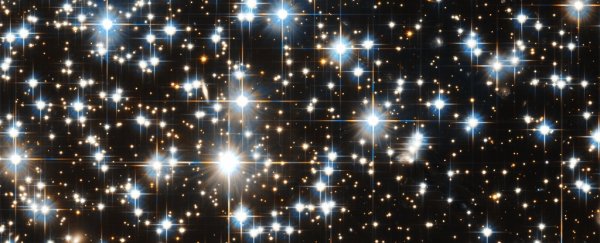When stars like the Sun reach the end of their lives, the object that remains is a white dwarf. This is the star's shrunken, naked core, no longer capable of nuclear fusion. It shines, but only with residual heat, slowly cooling over billions of years until it's completely cold and dark.
But not all white dwarfs cool the same way. Last year, astronomers found a certain type of massive white dwarf stars cool more slowly than others, as though they have an additional source of heat. But figuring out what that heat source could be is proving tricky.
We know now, thanks to new research, one thing that it isn't: the sedimentation, or inward sinking, of a neutron-rich stable isotope of neon deep in the stars' interiors.
Most stars in the Milky Way galaxy - those below about eight times the mass of the Sun - are destined to become white dwarf stars.
Stars of this mass, having run out of hydrogen and helium to fuse, have insufficient pressure to ignite the carbon that remains. They eject their outer material, and the core contracts into a sphere about the size of the Earth.
This Earth-sized sphere, consisting mainly of carbon and oxygen, is incredibly dense, the most massive up to around 1.4 times the mass of the Sun.
Only something called electron degeneracy pressure, an outward pressure generated by the inability of electrons with the same spin to occupy the same state, prevents the core from complete collapse.
Because they are so dense, with such a small surface area, they take a very long time to lose heat. Once the core of a white dwarf has stopped contracting, it can exceed temperatures of around 100,000 Kelvin (around 100,000 degrees Celsius and 180,000 degrees Fahrenheit).
Astronomers think that not enough time has passed since the beginning of the Universe for a white dwarf to have cooled completely.
But the so-called Q-branch white dwarf stars, which constitute around 6 percent of massive white dwarfs, cool even slower than that. According to a 2019 paper led by astronomer Sihao Cheng of Johns Hopkins University, this small fraction of white dwarfs demonstrate a cooling delay of about 8 billion years, compared to other white dwarfs.
Cheng and his team suggested that an isotope of neon, neon-22, which is found in some white dwarf stars in small amounts, might be responsible for the extra heating. In white dwarfs with carbon-oxygen cores, 22Ne sinking into the centre could provide an additional source of heat.
Now a team of astronomers led by Matt Caplan of Illinois State University have tested that hypothesis with molecular dynamics simulations and phase diagrams. According to their findings, that's just not possible.
Although the rate of sedimentation from single crystals is likely too slow to produce the observed heating, 22Ne clustering could potentially speed up the process. Even this, however, the team found unlikely.
In the simulations, they found that microcrystals of 22Ne in a liquid of carbon and oxygen at the ratios found in white dwarfs are always unstable.
There are only two options - either the mixture is so hot that the crystal melts and the neon dissolves into the liquid, or the whole mixture freezes.There's no middle point.
Even when the mixture is below the melting point of neon, but above the melting point of carbon and oxygen, the neon dissolves.
The team then used phase diagrams, a graph showing the physical states of a substance under a range of temperatures and pressures, to work out how much neon would be required in the mixture for neon to separate and stabilise.
Typically, carbon-oxygen white dwarfs have around 2 percent neon. In order for neon to be stable, this mixture would need to contain at least 30 percent neon.
"In summary," the researchers wrote in their paper, "we find that there are no conditions where a 22Ne-enriched cluster is stable in a carbon-oxygen white dwarf, and therefore enhanced diffusion of 22Ne cannot explain the Q branch."
This suggests that these Q-branch white dwarf stars may have a peculiar composition to explain the additional heating.
If the stars were just a little bit richer in neon - around 6 percent - single particle sedimentation, rather than cluster sedimentation, could generate heat. Sodium and magnesium would be poor candidates; like neon, they don't separate to form solids in relatively small quantities.
Iron-group elements, however, look a little more promising. Iron separates in a carbon-oxygen mixture, and as little as 0.1 percent can produce notable heating.
If some astrophysical process could enrich iron in Q-branch white dwarfs to 1 percent, that would be sufficient to delay cooling by several billion years, the researchers said.
"Thus, this work motivates including iron in white dwarf cooling models," they wrote. "This will require new phase diagrams of iron and a survey with molecular dynamics of the clustering and the characteristic sizes of iron clusters, which will be the subject of future work."
The research has been published in The Astrophysical Journal Letters.
